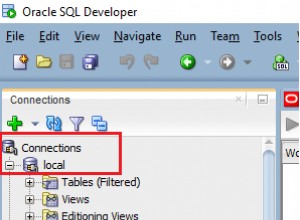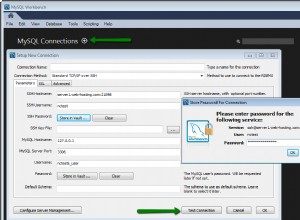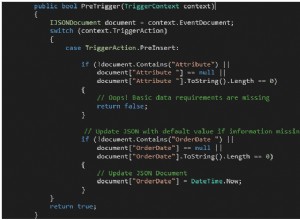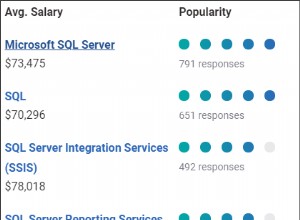Sembra un po' contorto, quindi sarei interessato a miglioramenti.
select distinct emp_id,
nvl(x_start_date,
lag(x_start_date)
over (partition by emp_id
order by rn)) as start_date,
nvl(x_end_date,
lead(x_end_date)
over (partition by emp_id
order by rn nulls first))
as end_date,
rating,
department
from (
select emp_id, start_date, end_date, rating, department,
case start_date
when lag(end_date)
over (partition by emp_id, rating, department
order by start_date) then null
else start_date end as x_start_date,
case end_date
when lead(start_date)
over (partition by emp_id, rating, department
order by start_date) then null
else end_date end as x_end_date,
rownum as rn
from table1
)
where x_start_date is not null or x_end_date is not null
order by emp_id, start_date
/
Con questi dati di prova:
EMP_ID START_DA END_DATE RA DEPARTMENT SALARY
---------- -------- -------- -- -------------------- ----------
2000 01012010 01012011 A HR 9000
2000 01012011 01012012 A HR 10000
2000 01012012 01012013 A+ HR 20000
2000 01012013 01012014 A HR 20000
2000 01012014 12319999 A HR 21000
3000 01012011 01012012 B Operations 50000
3000 01012012 12319999 B Operations 60000
4000 07012011 07012012 B Operations 50000
4000 07012012 07012013 B Operations 50000
4000 07012013 12319999 B Operations 60000
Ho questo:
EMP_ID START_DA END_DATE RA DEPARTMENT
---------- -------- -------- -- --------------------
2000 01012010 01012012 A HR
2000 01012012 01012013 A+ HR
2000 01012013 12319999 A HR
3000 01012011 12319999 B Operations
4000 07012011 12319999 B Operations
Ho anche provato con un emp_id (4000 ) che aveva tre intervalli di date contigui e si occupava di quell'OK:il where esterno La clausola fa scomparire le voci intermedie, in sostanza. Modificato per aggiungere :ora funziona anche con i tuoi intervalli di date aggiuntivi per 2000/A , poiché ho corretto l'ordinamento nel lead esterno /lag partizioni.
La query interna cancella tutto tranne la prima data di inizio e l'ultima data di fine per un blocco contiguo e la query esterna utilizza un secondo round di lead e lag per unirli in righe identiche, che sono distinct poi crolla.
Presumo start_date e end_date sono DATE campi, non VARCHAR2 e hai NLS_DATE_FORMAT impostato su MMDDYYYY . Se sono archiviati come stringhe, il che è una cattiva idea, è necessario to_date() in parecchi posti per far funzionare correttamente l'ordine.




